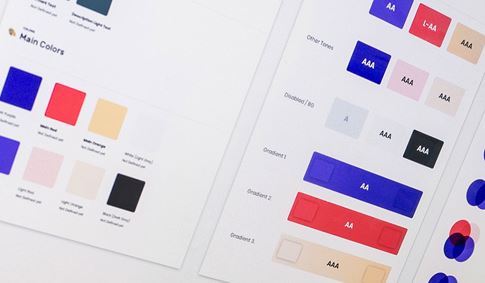For a company like ServiceNow, a leader in providing digital workflow platforms that streamline and automate complex processes across IT, HR, customer service, and more, a consistent, efficient, and trustworthy user experience is paramount. Users navigating intricate workflows, managing incidents, requesting services, and accessing critical data within the ServiceNow platform require an interface that is not only functional but also predictable and easy to understand. Ensuring this level of uniformity and quality across a platform used for such diverse and critical business functions is a significant challenge. This is where the ServiceNow Design System plays a vital role, serving as a living system that empowers them to design and achieve a consistent, efficient, and high-quality visual language, ultimately bringing cohesion and familiarity to the user experience across the entire platform.
The ServiceNow Design System is characterized as a "living system." This signifies that it is a dynamic, evolving entity that is continuously updated and refined to reflect the changing needs of the platform, its users, and technological advancements. In a rapidly evolving digital landscape and with ServiceNow constantly expanding its offerings, a static design system would quickly become outdated. A living system ensures that the design principles, components, and guidelines remain relevant and effective, actively supporting the ongoing development and evolution of the platform.
The system's core function is to empower us to design and achieve a consistent, efficient, and high quality visual language. This highlights the proactive role of the design system in enabling teams to build interfaces that meet a high standard across multiple dimensions. A "consistent" visual language ensures that interface elements, typography, colors, and layout patterns are uniform throughout the platform, regardless of the specific module or application a user is interacting with. An "efficient" visual language suggests that the design is optimized for usability and speed, minimizing user effort and streamlining workflows. A "high quality" visual language speaks to the overall aesthetic and polish of the interface, contributing to a professional and trustworthy user experience – crucial attributes for an enterprise platform handling critical business processes. The design system provides the necessary resources – guidelines, reusable components, tools – to empower designers and developers to achieve this consistent, efficient, and high-quality visual language in their work.
The ultimate impact of this empowered design process and the resulting visual language is that it brings cohesion and familiarity to the user experience across the platform. Cohesion means that the different parts of the ServiceNow platform feel connected and integrated, rather than a collection of disparate tools. The consistent visual language acts as a unifying thread, creating a sense of a single, well-organized system. Familiarity is a key outcome of this cohesion and consistency. When users encounter similar interface patterns and visual cues as they move between different functionalities within ServiceNow, their prior experience makes it easier to understand and use new parts of the platform. This reduces the learning curve and increases user confidence and efficiency.
The benefits of leveraging the ServiceNow Design System are significant for both ServiceNow and the organizations and individuals who rely on their platform. For ServiceNow, the living system fosters increased efficiency in the design and development process by providing reusable components and clear guidelines, accelerating the delivery of new features and updates across their extensive platform. It ensures a high degree of consistency and quality in their digital products, which is essential for maintaining their reputation as a leading provider of reliable and robust enterprise workflow solutions. The living nature of the system also allows ServiceNow to adapt quickly to new design trends and technological advancements.
For users of the ServiceNow platform – the IT professionals managing incidents, the employees requesting HR services, or the customers interacting with service portals – the design system contributes directly to a more user-friendly, predictable, and intuitive experience. The cohesive and familiar visual language reduces cognitive load and makes it easier to navigate complex workflows and access the information they need quickly. This enhanced usability improves productivity, reduces frustration, and contributes to a more positive overall experience with the ServiceNow platform.
In conclusion, the ServiceNow Design System is a vital living system that empowers the organization to design and achieve a consistent, efficient, and high-quality visual language. By bringing cohesion and familiarity to the user experience across the entire platform, the design system plays a crucial role in simplifying complex digital workflows and delivering exceptional experiences for the diverse users who rely on ServiceNow. It is the essential system that underpins ServiceNow's commitment to providing a unified, intuitive, and powerful platform for the digital enterprise.





